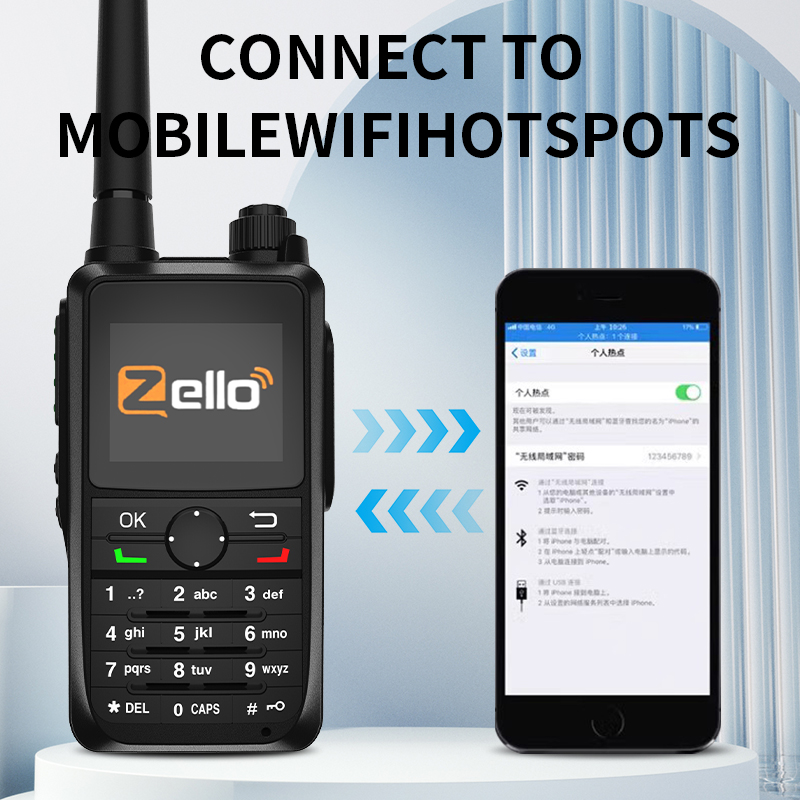Introduction
The allure of walkie-talkies in the digital age is like discovering a hidden superpower. These handy gadgets are not just relics from old spy movies; they’re versatile tools that bring a dash of magic to modern communication. But why should you care about long-distance communication? Because whether you’re navigating the wilderness, orchestrating an event, or just playing around, walkie-talkies make the experience infinitely more connected and fun.
Understanding Walkie-Talkies
What Exactly Is a Walkie-Talkie?
A walkie-talkie is a portable, hand-held device that transmits and receives voice messages using radio waves. Unlike mobile phones, they operate independently of network towers, making them ideal for areas with poor cellular coverage.
The Evolution of Walkie-Talkies: From Military to Mainstream
Originally developed for military use during World War II, walkie-talkies have since evolved into mainstream devices used by everyone from hikers to event planners. Their robust design and reliability have made them indispensable in various fields.
How Walkie-Talkies Work: The Science of Radio Waves
Walkie-talkies work by converting your voice into radio signals that travel through the airwaves. These signals are then picked up by another walkie-talkie and converted back into sound. The range and clarity depend on the frequency used and the environment.

Choosing the Right Walkie-Talkie
Key Features to Look for in a Walkie-Talkie
When shopping for walkie-talkies, consider factors like range, battery life, durability, and additional features such as weatherproofing, noise cancellation, and built-in GPS.
Comparing Models: Budget vs. High-End
Budget models are great for casual use, offering basic functionality and decent range. High-end models, however, provide extended range, better durability, and advanced features, making them suitable for professional or demanding environments.
Frequency Bands: UHF vs. VHF
Walkie-talkies operate on either Ultra High Frequency (UHF) or Very High Frequency (VHF) bands. UHF is better for indoor use due to its ability to penetrate walls, while VHF is ideal for outdoor use with fewer obstructions.
Setting Up Your Walkie-Talkie
Unboxing Your Device: What’s Included
When you unbox your walkie-talkie, you’ll typically find the devices themselves, charging cables, batteries, and a user manual. Some models may also include accessories like belt clips or headsets.
Charging Your Walkie-Talkie: Battery Basics
Before first use, charge your walkie-talkies fully. Lithium-ion batteries are common, offering good performance and longevity. Always follow the manufacturer’s charging instructions to ensure optimal battery life.
Configuring Frequencies and Channels: Step-by-Step Guide
Turn on your walkie-talkie and navigate to the settings menu. Select the desired frequency band and channel. Ensure both devices are set to the same channel to communicate effectively.
Mastering Walkie-Talkie Communication
Walkie-Talkie Lingo: Common Terms and Phrases
Get familiar with terms like “over” (your turn to talk), “roger” (message received), and “10-4” (acknowledgment). These phrases make communication clear and efficient.
Using Code Words for Efficient Communication
Code words can make your communication quicker and more secure. Develop a set of codes with your team to convey messages succinctly.
Practicing Proper Walkie-Talkie Etiquette
Respect others by keeping transmissions short and to the point. Avoid interrupting and always listen before speaking to ensure the channel is clear.
Practical Applications of Walkie-Talkies
Outdoor Adventures: Hiking and Camping
Walkie-talkies are perfect for keeping in touch while exploring nature. They help coordinate routes, share sightings, and stay safe in case of emergencies.
Urban Uses: Staying Connected in the City
In the city, walkie-talkies are great for events, festivals, or construction sites. They cut through the urban noise and offer instant communication without relying on cell networks.
Home and Family Fun: Kid-Friendly Walkie-Talkies
Kids love walkie-talkies for their playful potential. They can turn backyard adventures into thrilling missions or simply keep in touch with parents around the house.
Maximizing Your Signal Range
Tips for Enhancing Walkie-Talkie Range
Hold the walkie-talkie upright and keep the antenna clear of obstructions. Using high ground can also improve signal range significantly.
Dealing with Physical Obstacles: Trees, Buildings, and More
Physical barriers like trees and buildings can weaken signals. Move to open spaces or higher elevations to improve communication clarity.
Upgrading Your Antenna: How to Do It Right
Consider investing in a high-gain antenna to boost your walkie-talkie’s range. These antennas are designed to pick up signals more effectively, especially in challenging environments.
Troubleshooting Common Issues
Identifying and Fixing Signal Interference
If you experience static or poor reception, try changing channels to avoid interference from other devices. Ensure your walkie-talkies are fully charged and in good condition.
What to Do When Your Walkie-Talkie Won’t Turn On
Check the battery and charging connections. If the device still won’t turn on, consult the user manual or contact customer support for assistance.
When to Seek Professional Help
If your walkie-talkie suffers from persistent issues, it might be time to seek professional help. Technicians can diagnose and repair more complex problems.
Advanced Walkie-Talkie Tips
Integrating Walkie-Talkies with Smartphones
Some modern walkie-talkies can be paired with smartphones, offering extended functionality like GPS tracking and text messaging through specialized apps.
Exploring Walkie-Talkie Accessories: Headsets, Clips, and More
Enhance your walkie-talkie experience with accessories like headsets for hands-free use, belt clips for easy carrying, and cases for protection.
Using Walkie-Talkies in Emergency Situations
In emergencies, walkie-talkies provide reliable communication when other systems fail. Use them to call for help, coordinate rescue efforts, and stay informed.
Maintaining Your Walkie-Talkie
Regular Maintenance Tips for Longevity
Keep your walkie-talkies in top shape with regular checks and maintenance. Clean the exterior, check the battery connections, and update any firmware if applicable.
Cleaning Your Walkie-Talkie: Dos and Don’ts
Use a soft cloth to clean the exterior and avoid harsh chemicals that could damage the device. Ensure all ports are dry before use.
Proper Storage for Long-Term Use
Store your walkie-talkies in a cool, dry place. Remove the batteries if you won’t be using them for an extended period to prevent leakage and damage.
Safety and Legal Considerations
Legal Restrictions on Walkie-Talkie Use
Be aware of local regulations regarding walkie-talkie use. Some frequencies may be restricted or require a license.
Ethical Communication Practices
Use walkie-talkies responsibly. Avoid using them to invade privacy or disrupt other users. Always prioritize clear and respectful communication.
Safety Tips for Using Walkie-Talkies in Various Environments
In outdoor settings, ensure your walkie-talkie is weatherproof. In urban areas, be mindful of interference and privacy concerns.
Conclusion
The Joy of Using Walkie-Talkies
Walkie-talkies offer a unique blend of nostalgia and modern utility. Their simplicity and reliability make them a joy to use in various scenarios.
Final Thoughts: Why Walkie-Talkies are Still Relevant Today
Despite the prevalence of smartphones, walkie-talkies remain relevant due to their reliability and independence from cellular networks. They’re a timeless tool for staying connected.


donde puedo obtener el manual de usuario en español, del walki Zello DG 6300
English operation manual only, thank you!